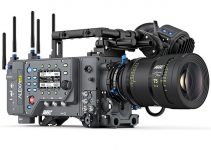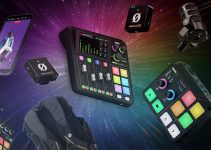Just a few days ago, Samsung released Galaxy Note 9 – the successor to their premium line of productivity-oriented smartphones. Surprisingly enough, the updated Note 9 camera turns out to be one of the best currently available on the market. With amazing video quality, gimbal-like stabilization, and a shocking amount of dynamic range, it’s now easier than ever to get cinema-like shots with a device that literally fits in your pocket.
In the video below, Armando Ferreira puts the Note 9 video against the Sony A7 III (using the auto settings), while asking us to determine which device shot what clip. Of course, it’s recommended that you watch the entire video first as what you are about to see may indeed surprise you.
As Ferreira points out, the video capabilities of the Note 9 have easily surpassed his expectations. Not only does the phone seem capable of capturing footage as detailed as the A7III, but the Note 9 performs even better than the mirrorless camera in certain aspects.
One of the most significant improvements prevalent in the Note 9’s camera is its high degree of dynamic range compared to the A7III, showing a greater level of balance between the shadows and highlights in the captured footage. When comparing the sky in all of the test shots, for instance, you can see how the Note 9 retains a decent amount of image data, whereas the A7III completely blows out this specific area of the shot.
According to Ferreira, this outcome is due to the fact that Note 9’s camera tends to prioritize exposure for the highlights, whereas the Sony A7III turns out to be better when exposing for detail in darker areas of the image. Therefore, Samsung’s exposure priority will greatly benefit those who are shooting outdoors in bright daylight – a typical shooting scenario that often causes problems for smartphone filmmakers.
While the Note 9 definitely impresses in the video department, it is far from perfect. For example, looking at the footage of the brick building, it’s clear that its colors are less true-to-life compared to the A7III – seeming more biased to an orange tint rather than a pure brick-red color. Also, the smartphone’s video does appear a bit oversaturated at times, as seen in the red and green areas of the image.
Last but not least, we should take into consideration that these shots were made with the default settings of each device. In fact, by shooting in Log, in addition to a couple of minor adjustments, the Sony A7III is undoubtedly capable of capturing wider dynamic range than the Note 9.
Nevertheless, the latest Samsung’s offering goes to show that the advancements in smartphone and camera technologies have reached a tipping point where it becomes harder and harder to find viable excuses as to why you shouldn’t use your smartphone to capture some professional-looking, cinematic images even in the most challenging shooting scenarios and situations you might come across out in the field.
[source: Armando Ferreira]
B&H Order Links:
Sony Alpha a7 III Mirrorless Digital Camera (Body Only)
Samsung Galaxy Note9 (Ocean Blue)
Disclaimer: As an Amazon Associate partner and participant in B&H and Adorama Affiliate programmes, we earn a small comission from each purchase made through the affiliate links listed above at no additional cost to you.
Claim your copy of DAVINCI RESOLVE - SIMPLIFIED COURSE with 50% off! Get Instant Access!





